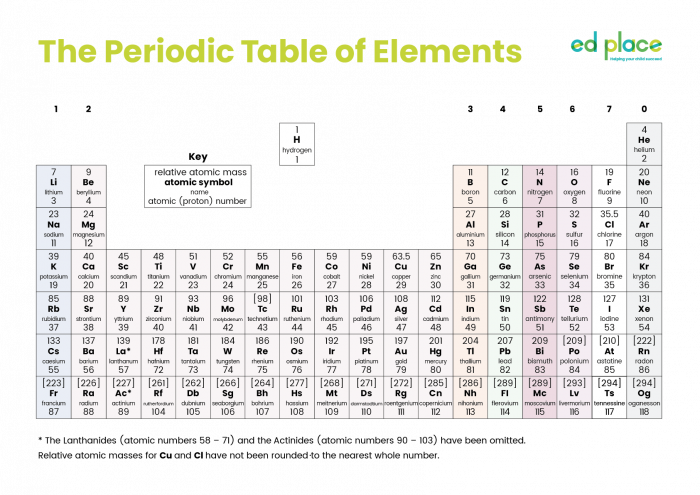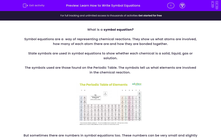What is a symbol equation?
Symbol equations are a way of representing chemical reactions. They show us what atoms are involved, how many of each atom there are and how they are bonded together.
State symbols are used in symbol equations to show whether each chemical is a solid, liquid, gas or solution.
The symbols used are those found on the Periodic Table. The symbols tell us what elements are involved in the chemical reaction.

But sometimes there are numbers in symbol equations too. These numbers can be very small and slightly lower than the letters (we call them subscript) and they tell us how many atoms of each element is present.
For example
H₂SO₄ is the formula for sulfuric acid. It tells us that there are three elements in it - hydrogen, sulfur and oxygen and that there are 2 atoms of hydrogen, 1 atom of sulfur and 4 atoms of oxygen in it!
State symbols are also used in symbol equations to show what state the various chemical substances are - solid (s), liquid (l), gas (g) or aqueous (aq) which means in a solution.

Don't worry if that's a lot to take in. Let's have a look at some questions and you can come back to this page by clicking on the red help button on the screen.







